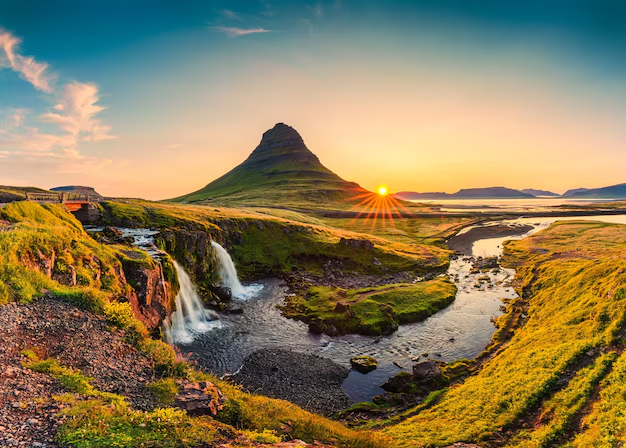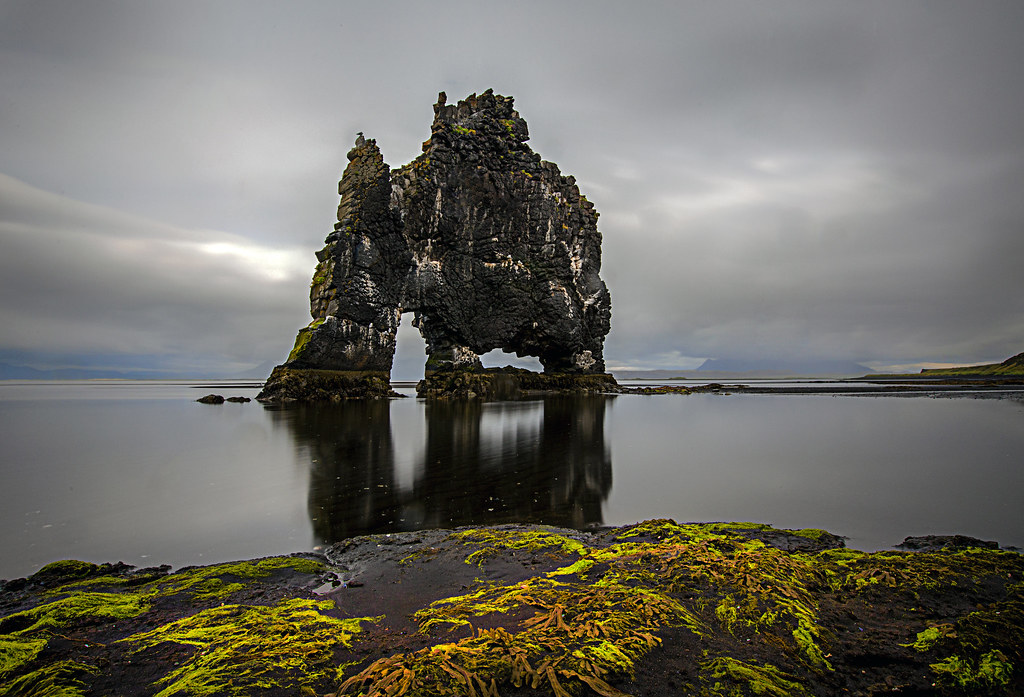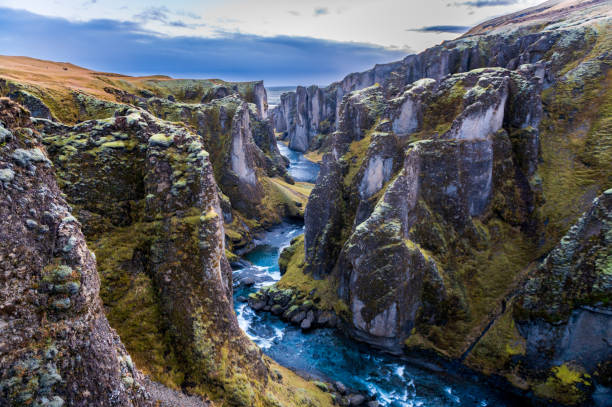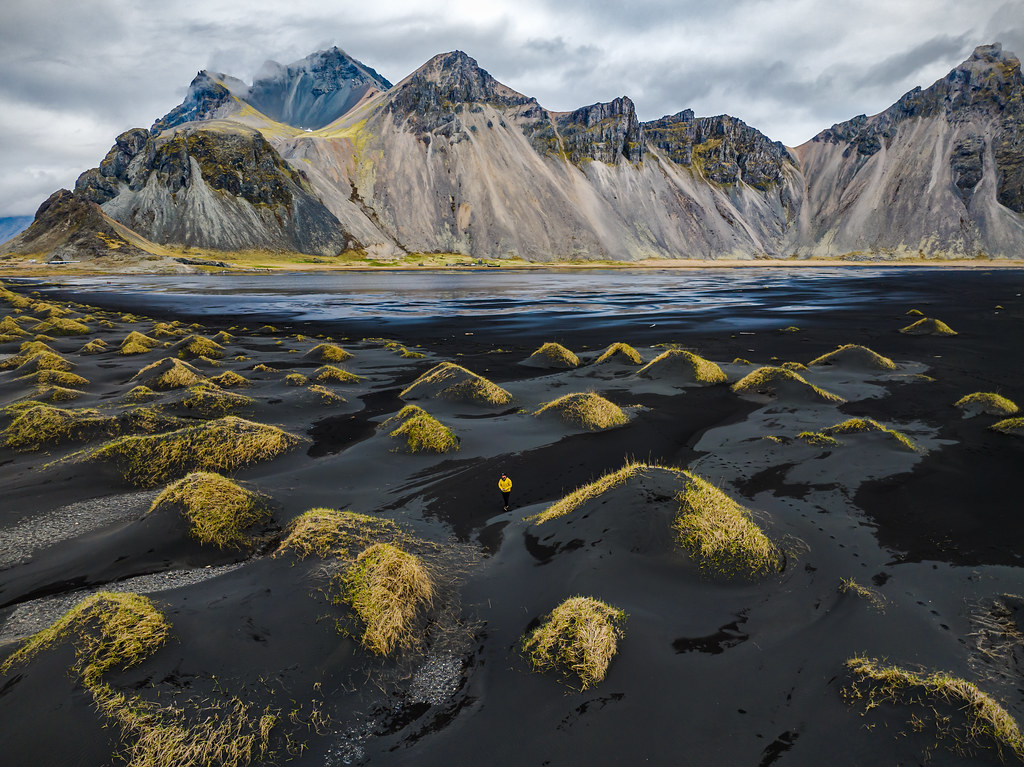Scenic Viewpoints
Iceland is full of dramatic landscapes and picture-perfect views. Whether you’re a professional photographer or just capturing your trip, these hand-picked spots offer some of the most iconic and breathtaking scenes in the country. From coastal cliffs to volcanic ridges, every location is worth the stop.

Dyrhólaey Viewpoint
One of Iceland’s most famous views. Overlooks black sand beaches, sea arches, and puffin cliffs. Best visited at sunset or during nesting season (May–August).

Valahnúkur, Þórsmörk
A short but steep hike in Þórsmörk leads to one of the best panoramic views in Iceland. Overlooks volcanoes, glaciers, and braided rivers below.

Kirkjufell
The most photographed mountain in Iceland. Combine your shot with the nearby waterfall for a perfect frame. Best light: sunrise/sunset or northern lights season.
Tips for Visiting Viewpoints & Photo Spots
Whether you’re chasing the perfect sunrise or hunting northern lights, Iceland’s landscapes offer endless opportunities for incredible photos. Here are a few tips to help you make the most of each stop.
- 📷 The best light for landscapes is usually around sunrise and sunset — known as golden hour.
- 🌌 If visiting in winter, many viewpoints are ideal for northern lights (clear sky + no light pollution).
- 🛻 Some locations require a 4x4 or short hike. Always check road access and trail conditions beforehand.
- 📍 A good tripod, extra batteries, and waterproof gear are a must in Icelandic weather.
- 🚁 Drones are allowed at many sites, but check local signs and avoid flying near wildlife or crowds.
- 🌿 Stay on marked trails and respect nature — especially in fragile mossy areas.
If you're unsure whether a viewpoint is accessible or worth the detour — our map can help you plan it out based on season, vehicle type, and hiking level.

Hvítserkur
A 15-meter sea stack shaped like a dragon drinking from the ocean. Best visited at low tide. Dramatic, unique photo spot on the Vatnsnes Peninsula.

Fjaðrárgljúfur Canyon
One of Iceland’s most photogenic canyons, with winding green walls and walking paths along the top. Popular spot for drone photography and aerial shots.

Vestrahorn
Jagged peaks rising over black sand dunes and the sea. A photographer’s dream near Höfn. Amazing reflections during calm weather and sunrise/sunset light.
Planning Your Route Around the Views
Some photo spots are easy roadside stops, while others may require a detour, a short hike, or a 4x4 vehicle. Timing is everything — some locations are best during certain times of day or year. Our curated map helps you decide what to see, when, and how.
- 📅 Summer offers long daylight hours and access to most Highland views.
- ❄️ Winter brings stunning contrast, icy roads, and northern lights conditions.
- 🌅 Many famous photo spots are best during sunrise or sunset (check directions).
- 🚗 Some viewpoints are only reachable via F-roads — check vehicle requirements.
- 🗺️ Want to save time? Use our map to find locations by accessibility, season, and photo category.
FAQ – Scenic Views & Photography 💬
When is the best time of day to visit scenic viewpoints?
Sunrise and sunset offer the best light for landscapes. In summer, you’ll have golden light almost all night. In winter, daylight is short but dramatic.
Are the viewpoints open year-round?
Most are accessible year-round, but some highland or remote spots (like Þórsmörk or Landmannalaugar) may only be reachable in summer with a 4x4.
Do I need a 4x4 to reach photo spots?
Some, yes. Locations like Þakgil or Fimmvörðuháls require a 4x4 or careful planning. Others, like Kirkjufell or Skógafoss, are accessible by any vehicle.
Can I fly my drone at these locations?
Drones are allowed in some areas, but restricted in national parks or crowded tourist spots. Always follow signs, respect wildlife, and check local rules.
How do I find the best compositions?
Use trails, foreground interest (like rocks, rivers, people), and the rule of thirds. Try multiple angles — and bring a tripod for stability in wind!
Is it safe to go off-trail?
Stick to marked paths to protect fragile nature, moss, and yourself. Many areas are slippery or unstable, especially near cliffs or in wet weather.
